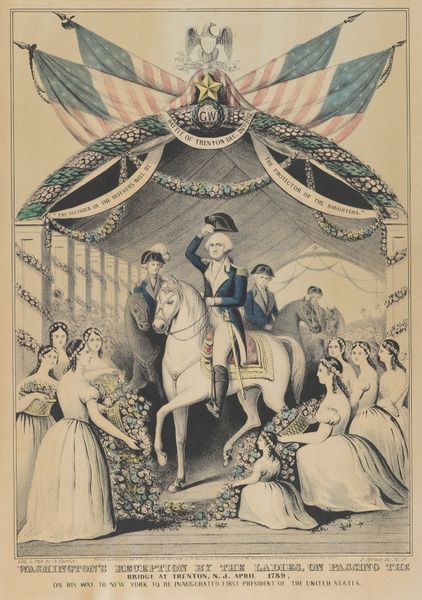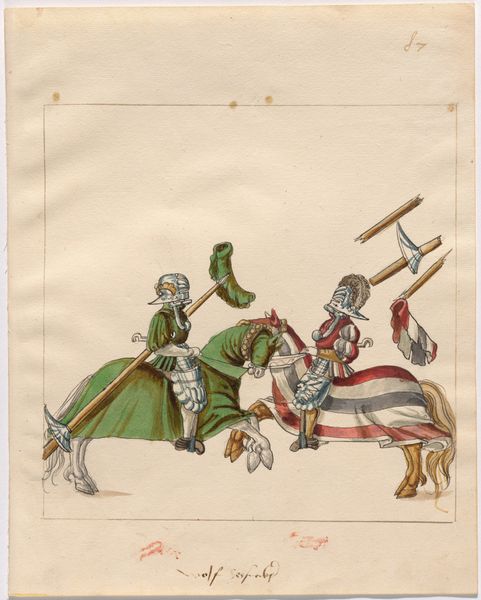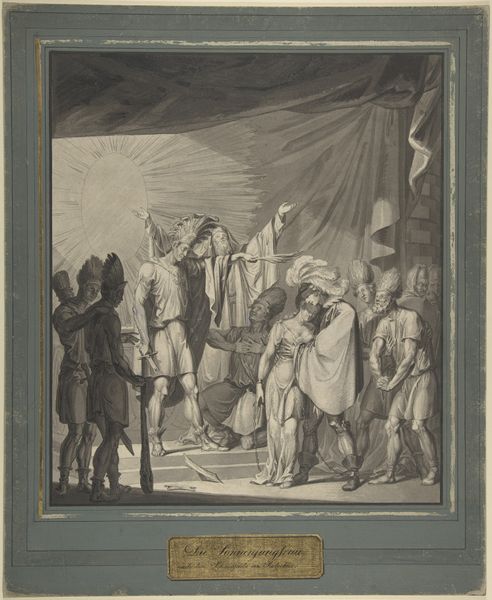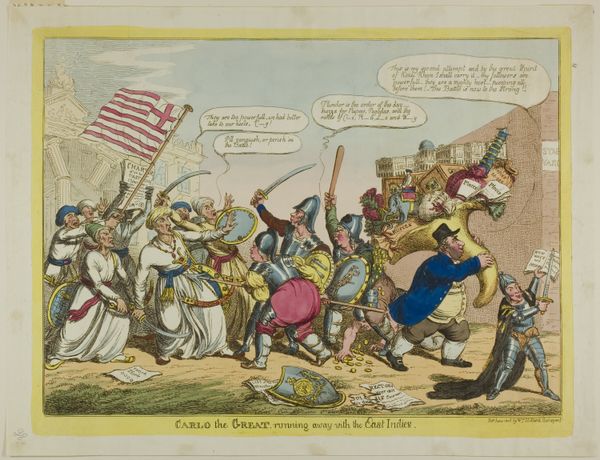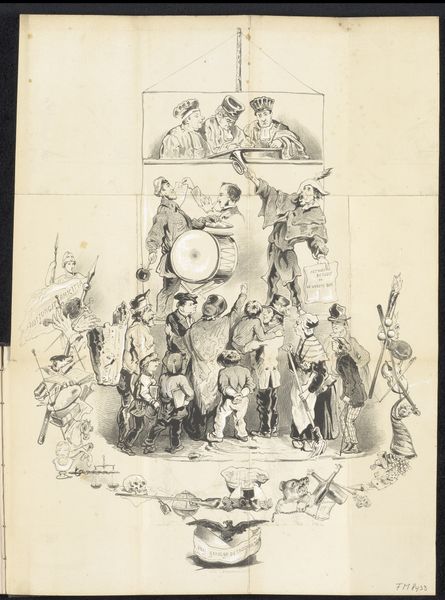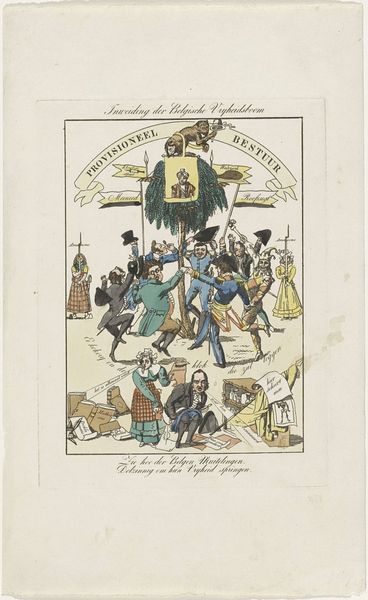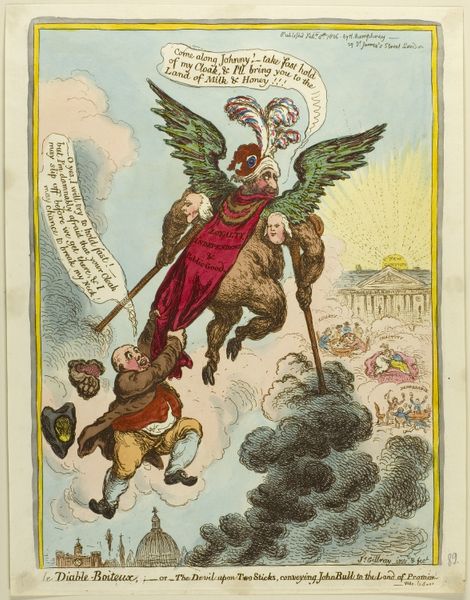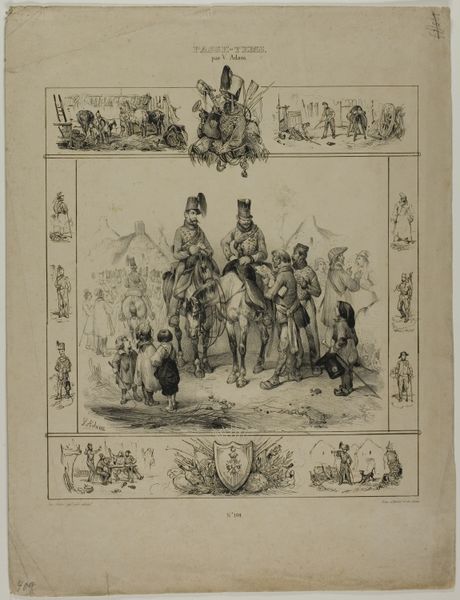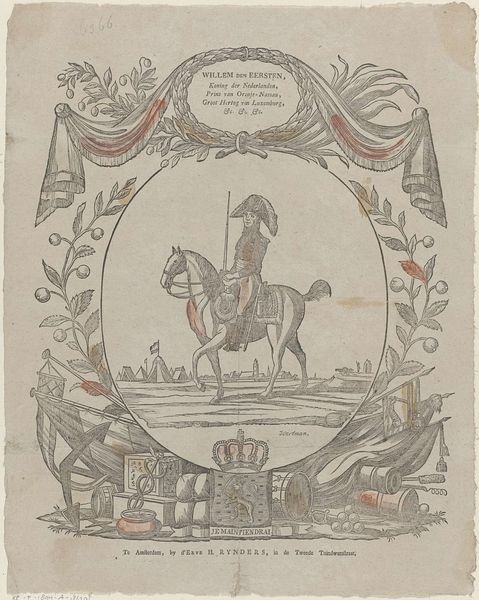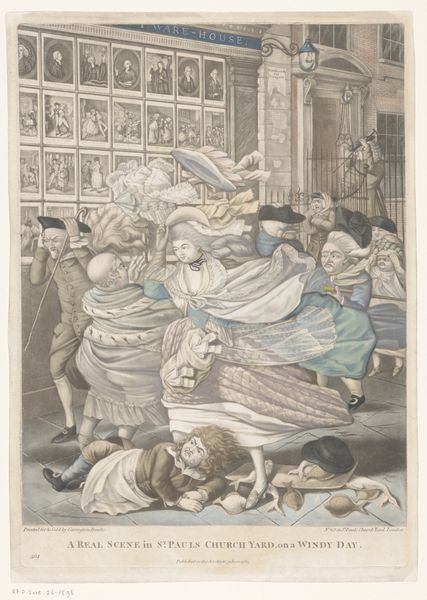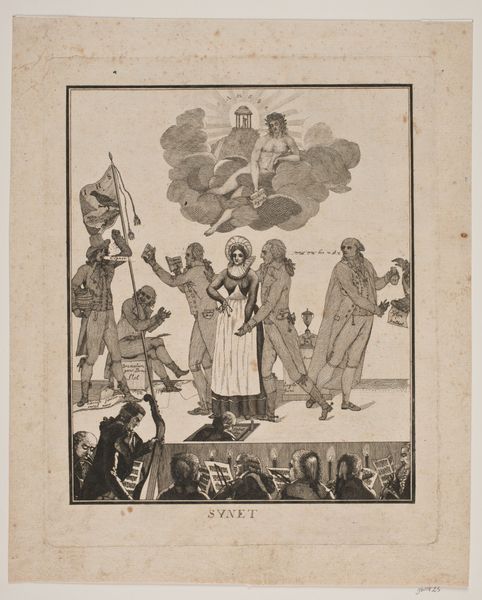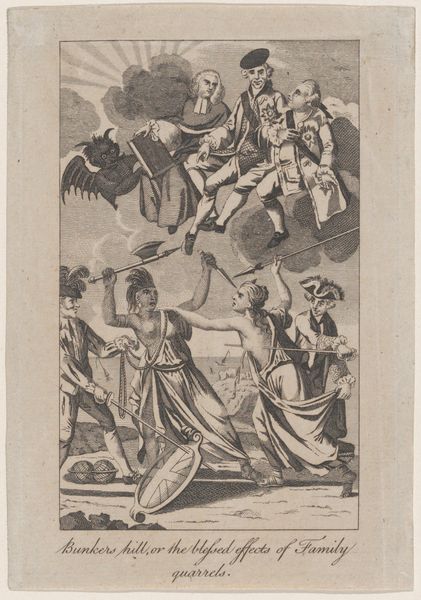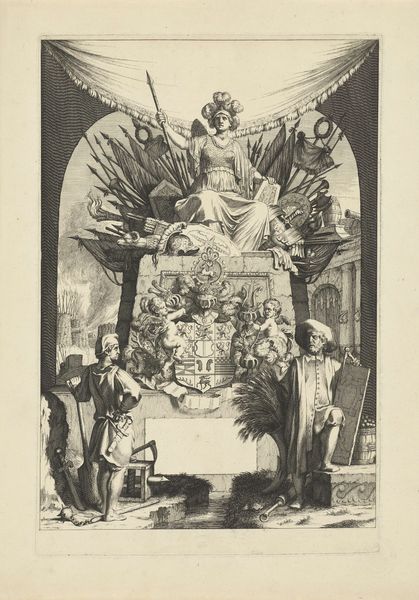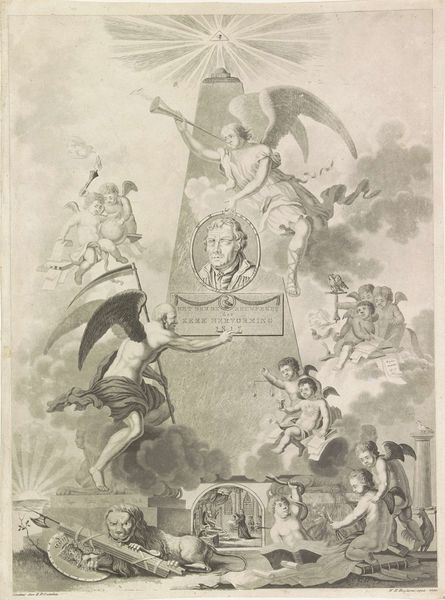
Washington's Reception by the Ladies on Passing the Bridge at Trenton, N.J., April 1789, on His Way to be Inaugurated First President of the United States 1845
0:00
0:00
drawing, lithograph, print
#
portrait
#
drawing
#
narrative-art
#
lithograph
# print
#
cityscape
#
genre-painting
#
history-painting
#
academic-art
Dimensions: Image: 12 in. × 8 9/16 in. (30.5 × 21.8 cm) Sheet: 16 1/8 × 12 5/16 in. (41 × 31.2 cm)
Copyright: Public Domain
Editor: This lithograph, created by Nathaniel Currier in 1845, is titled *Washington's Reception by the Ladies on Passing the Bridge at Trenton, N.J., April 1789, on His Way to be Inaugurated First President of the United States*. I’m struck by how idealized the scene is, everyone seems so happy and celebratory. What symbols or meanings do you find most potent in this image? Curator: The iconography here is rich indeed. Notice the archway; it isn't simply decorative. The phrases woven into its design— "The defender of the mothers will be," "The protector of the daughters"—connect Washington to classical motifs of leadership and protection, subtly aligning him with figures from Roman history. Also, see the Eagle at the very top? Editor: Yes, above the flags! Curator: Exactly. Consider that the Eagle in this period, especially coupled with the flags, wasn't just a patriotic symbol; it evoked aspirations of nationhood. By placing it atop this scene of female admiration, the artist seems to be visually linking Washington’s leadership to ideas of domestic security and national identity. Why do you think Currier included so many women in the piece? Editor: Maybe to emphasize the support Washington had from all parts of society? Curator: Precisely. It’s more than just depicting a historical event. The act of showering flowers – flowers given *by* women *to* Washington -- speaks to deeper desires of that time: hope for peace, prosperity, and the formation of a nurturing nation under a strong, virtuous leader. We are looking back to the Roman idea of Patria! Editor: It’s fascinating to consider how much meaning can be layered into a single image like this! I hadn’t really thought about it before, but symbols have such emotional weight.
Comments
No comments
Be the first to comment and join the conversation on the ultimate creative platform.
